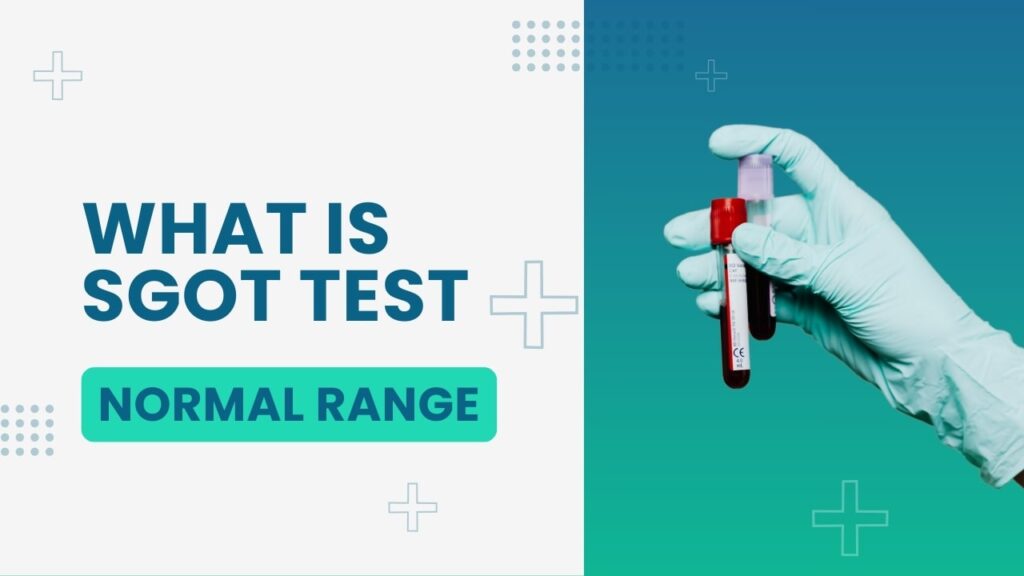Last updated on May 21st, 2025 at 02:52 pm

We’ve each been there—staring at a medicinal report filled with notes and counts that look like an unfamiliar dialect. One of the mysterious conditions is SGOT. If you’ve constantly doubted yourself, “What does SGOT mean, and feel I doubt?” you’re in a safe community. SGOT, or Serum Glutamic-Oxaloacetic Transaminase, is an enzyme your liver, heart, muscles, and even your brain generate. Think of it as a basic alarm light: though tissues are damaged, SGOT spills inside your bloodstream.
By the complete of this blog, you’ll notice:
- Exactly what the SGOT test means when your doctor orders it.
- Why your SGOT normal range differs for men and women.
- What SGOT high means, and the symptoms you shouldn’t ignore.
- Simple, everyday steps you can take to bring elevated SGOT levels back down.
Grab a cup of tea, and let’s demystify SGOT—so you can handle your health reports confidently.
What Does the SGOT Test Mean?
When your physician orders a Liver Function Test (LFT), SGOT is one of the key markers checked. But what exactly does the SGOT test mean? In essence, it measures how much of the SGOT enzyme is floating in your blood.
SGOT contributes to energy production by helping convert proteins into cellular fuel. But here’s the catch: whenever cells in your liver, heart, or muscles get damaged—think infection, overuse, or injury—SGOT releases into your circulation, signaling that something might need attention.
SGOT Full Form
SGOT signifies Serum Glutamic-Oxaloacetic Transaminase, frequently labeled AST (Aspartate Aminotransferase) in reports. Both names indicate the unchanging enzyme, so don’t be amazed if you notice them used correspondingly.
- In plain terms, the SGOT test checks for tissue stress by tracking this enzyme’s levels in your blood.
SGOT Normal Range: Men vs Women
Interpretation starts with comparison. Your SGOT level must be checked against the SGOT normal range, which differs slightly by gender:
| Gender | Typical SGOT Range (U/L) |
| Men | 8 – 40 |
| Women | 5 – 35 |
Why the difference? Men generally have more muscle mass, leading to a naturally higher enzyme baseline. But remember, these figures are broad guidelines—individual lab cutoffs can vary.
- Pro tip: Always review results with your physician, who considers age, lifestyle, and overall health.
SGOT High Means: The Causes and Clues
Spotting SGOT high on your report can be alarming. But what does that signal?
1.Liver issues: Hepatitis, fatty liver disease, or cirrhosis can all drive up SGOT.
2.Heart injury: A recent heart attack often spikes SGOT, alongside other cardiac markers.
3.Muscle strain: Vigorous exercise or trauma releases SGOT from muscle fibers.
4.Other organs: The pancreas and kidneys hardly help elevations.
Imagine your body as a beautifully brought into harmony machine—the liver acts like a filter. When that filter struggles, SGOT levels rise as an alarm. Yet one high reading doesn’t equal a definitive diagnosis; it’s a call to dig deeper.
- Never self-diagnose. Elevated SGOT requires a holistic view—consider other tests like SGPT (ALT) and imaging studies.
Spotting Symptoms: When Your Body Speaks
Sometimes, a spike in SGOT comes with no fanfare—no pain, no color change, just a number on paper. Other times, you feel it:
- Unrelenting fatigue that coffee can’t fix.
- Jaundice, or that telltale yellow tint in your eyes or skin.
- Tummy trouble, especially sharp twinges or fullness in your upper right abdomen.
- Weird urine or stool colors, hinting at bilirubin imbalance.
Take Ramesh, a 40-year-old banker who chalked up his tiredness to deadlines—until his eyes went yellow. A quick test revealed SGOT at 90. With diet tweaks, rest, and zero alcohol, he saw normal levels in six weeks.
- Notice any of these symptoms? Don’t wait—schedule a follow-up.
Bringing SGOT Back to Baseline: Practical Steps
Wondering how to reduce SGOT levels safely and effectively? Often, the simplest changes work wonders.
1. Food First
- Liver-loving fare: Load up on spinach, kale, beets, and garlic.
- Antioxidant power: Berries, citrus fruits, and green tea.
- Avoid: Alcohol, processed junk, and sugary drinks.
2. Lifestyle Tweaks
- Move gently: Yoga, walking, and light cycling can help—skip marathon workouts for now.
- Hydrate: Aim for 8–10 glasses of water daily.
- Rest: Prioritize 7–8 hours of sound sleep; your liver heals most at night.
- Unwind: Stress management through meditation or hobbies.
3. Smart Supplements (with approval!)
Quick fix alert: Cutting alcohol and sugary treats immediately can show effects in days.
When to Call in the Experts
If your SGOT is more than 1.5 times the upper limit, it’s time for a deeper dive.
Your doctor may order:
- A full liver panel, including SGPT, ALP, and bilirubin tests.
- Ultrasound or MRI of the liver.
- Screenings for viral hepatitis or autoimmune markers.
- In rare cases, a liver biopsy.
Conclusion
Comprehension of the SGOT common range and definition of SGOT high means equips you to regulate your liver health. Early action—whether through diet, lifestyle, or medical intervention—makes all the difference.
- For trustworthy liver support, delve into Medkart Pharmacy’s range of wellness kits plus supplements. Your health trek deserves smart, science-backed results.
FAQs: Quick Answers for Busy Readers
Q1. What is SGOT in a blood test?
An enzyme indicating tissue damage in the liver, heart, or muscles.
Q2. How to reduce SGOT?
Focus on clean eating, adequate rest, hydration, and avoiding toxins like alcohol.
Q3. What if SGOT is high?
Follow up with additional tests and consult a healthcare provider.
Q4. What happens if SGOT is high long-term?
Risk of chronic liver issues—fibrosis, cirrhosis, or heart problems.
Q5. How to reduce SGOT quickly?
Eliminate alcohol, eat fiber-rich foods, hydrate heavily, and consider liver-support supplements.